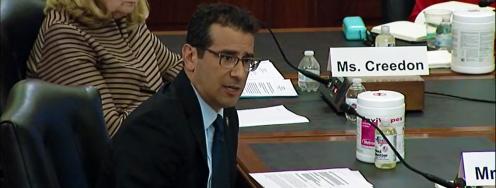Government Report Sends $20 Billion Uranium Plant Back to Drawing Board
On the radar: $20 billion UPF idea not feasible; Searching for MOX answers; Size of active U.S. nuclear stockpile; Iran negotiations a four player game; Predicting Iran’s stockpile conversion rate; More ballistic missile defense problems; Pushback on missile silo proposal; North Korea tests rocket engine; Disarmament, climate and public attention; and GODZILLA!!!!!!!!!
May 2, 2014 | Edited by Lauren Mladenka and Geoff Wilson
UPF red teamed - “Design efforts on the current ‘big box’, single structure UPF concept should be stopped while a comprehensive reevaluation of program requirements and applicable design standards is undertaken, along with an evaluation of projected funding, to provide a firm revised project baseline,” says a new government report on alternatives to the proposed, $20 billion Uranium Processing Facility in Tennessee. The new report recommends project scope and management changes in order to continue U.S. uranium capabilities without the unsustainable costs and program risks that have plagued the UPF.
--Full report: “Final Report of the Committee to Recommend Alternatives to the Uranium Processing Facility Plan in Meeting the Nation’s Enriched Uranium Strategy” by the National Nuclear Security Administration. April 2014 (pdf) http://1.usa.gov/1n5HBPE
First look - “The Red Team report is worth serious study...It is right to recognize the Supersized UPF is unaffordable and can’t be built in time. Unfortunately, its recommendations also contain the seeds of the next disaster,” says Ralph Hutchison of the Oak Ridge Environmental Peace Alliance. Quick analysis of the report here. (pdf) http://bit.ly/1ml9T4Y
MOX alternative - “Senate appropriators are giving the Obama administration two weeks to come up with a plan for driving down the cost of constructing a controversial facility that would convert bomb-grade plutonium into nuclear fuel,” writes Douglas Guarino in Global Security Newswire. “Energy Department officials estimate that construction of the beleaguered South Carolina facility is about 40 percent complete, and that the government would have to spend $25.1 billion more over the site's lifetime for it to complete its mission.”
--“Alternatively, the department could potentially meet the terms of an agreement with Russia by simply down-blending plutonium left over from the Cold War at a cost of $8.8 billion, according to a report it released earlier this week. Under the down-blending option -- one of several the department is considering along with a possible completion of the mixed-oxide fuel conversion facility -- plutonium disposal could be finished by 2046 and carries the least risk of encountering technical hurdles that would cause delays, according to the report. The MOX facility could complete disposition of the plutonium by 2043 at the earliest and carries ‘significant risk’ of being delayed further, the report said.” Read the full article here. http://bit.ly/1kBhWLn
Numbers and sense - “This week has seen the release of some important details pertaining to the size of the US nuclear arsenal. Size matters, even if it’s not the only policy criterion that matters,” writes Kingston Reif in Nukes of Hazard. “In the four years between declassifications [of the size of the U.S. arsenal], the size of the active stockpile shrunk by a total of 309 warheads (or roughly 6%)... Yet a 6% reduction in four years doesn’t seem to reflect favorably on progress toward the lofty goals the President articulated in Prague at the beginning of his first term. It also pales in comparison to the cuts made by the George W. Bush administration, which slashed the stockpile by about 21% (or over 2100 warheads) during its first four years and 50% (or over 5,000 warheads) by the time it left office in 2001.”
--External factors such as an uncooperative Congress “are not the only reason the President has made only minimal changes to the size of the stockpile. As Hans Kristensen notes ‘the administration itself has reaffirmed long-standing nuclear policy, protected the force structure, and emphasized modernizations of nuclear forces.’ This is not to say that some modernization isn’t required, but rather that the administration as a whole has placed greater emphasis on that plank of the agenda than it has on reshaping US nuclear posture...In the end, if President Obama wants his nuclear policy legacy to include significant reductions to the nuclear stockpile, he will need to be far bolder than he has been to date. ” Read the full piece here. http://bit.ly/1udLALD
Pushback on silos - “A House bill's mandate that all nuclear missile silos be kept operational indefinitely has drawn opposition from some Democrats,” Global Security Newswire reports. “A congressional provision to indefinitely prevent the reduction of missile silos undermines our military's ability to determine optimal force structure and adapt to our security needs," says U.S. Representative Loretta Sanchez (D-CA). "It is only sensible that as we reduce the number of our nuclear weapons, we maintain the ability to appropriately size our nuclear force structure." Get the full story here. http://bit.ly/1jobnvP
Iran uranium prediction - “One of the focal points of Iran’s nuclear program is its remaining stockpile of near-20% enriched uranium-235 stored in the form of uranium hexafluoride (UF6),” writes Ferenc Dalnoki Veress in a piece for the Iran Fact File.“ If Iran were to restart its full nuclear enterprise, it is this material that would be the most attractive route to producing a nuclear weapon. Iran has significantly reduced its stock of near 20% UF6 over the past three months as required by the JPOA, and now only has just over 56 kilograms of such material, far less than needed to produce even one nuclear device.” A detailed analysis finds “a predicted conversion rate of 12 kg/week, and that the conversion of the entire near-20% UF6 stockpile could occur in less than one month.” Read the full analysis here. http://bit.ly/1hkcad4
Four sided game of chess - “A government negotiating with another government is almost inevitably required to conduct a second negotiation with its own domestic constituents whose own interests will be affected by the outcome,” writes Gary Sick in a piece for The Iran Primer. “The classic image is the negotiator facing his foreign adversary over one table, then swiveling around to confront his domestic adversaries at a second table.”
--“In the current negotiations with Iran over the future of its nuclear program, the United States is facing something even more daunting. It is engaged in at least four separate negotiations at the same time: 1) Direct talks with Iran, 2) Consultations with its negotiating partners in the so-called P5+1 – the five Permanent Members of the United Nations Security Council plus Germany – who must develop a unified bargaining position, 3) Congress of the United States, [and] 4) Allies such as Israel and Saudi Arabia, whose interests will be impacted by the outcome. Success in one dimension of this chess match does not necessarily guarantee success in any of the others, although in the end a successful final outcome will require at least a measure of success in all four dimensions. Ironically, crafting an agreement with Iran could prove to be the easiest part of the diplomatic game.” Read the full analysis here. http://bit.ly/PXgEPo
Tweet - @NIACouncil: #Iran Nuclear Talks: The 'Trust but Verify' Dictate by @VartanOskanian for @AlJazeera http://aje.me/1fJi337
West Coast missile defense - “Congressional auditors say the Pentagon is not giving Congress adequate information about its plan for testing a troubled strategic missile defense system,” writes Rachel Oswald in a piece for Global Security Newswire. “Information provided by the Defense Department on options for conducting additional tests of the Ground-Based Midcourse Defense system is not nearly comprehensive enough to give lawmakers a solid understanding of the benefits and risks of pursuing different development and testing strategies, the Government Accountability Office said in a Wednesday report.” Full story here. http://bit.ly/1jo8StE
More BMD delays - “The U.S. missile defense system could see additional costs and delays after several test failures and technical challenges in 2013, a congressional watchdog agency warned in a new report released Tuesday. The U.S. government has already spent $98 billion since 2002 to develop a complex, layered system to defend against enemy ballistic missile attacks, with an additional $38 billion to be spent through fiscal 2018, according to the report by the Government Accountability Office. But continued problems with key aspects of the program, including the ground-based midcourse defense managed by Boeing Co, could drive the costs of U.S. missile defense system even higher in coming years, the GAO said. The report also faulted the U.S. Missile Defense Agency for what it called "unreliable" and incomplete cost estimates, and recommended steps to improve the agency's schedule baselines.” Full story by Andrea Shalal of Reuters. http://reut.rs/1n5H6oI
Engine test - “North Korea has recently conducted engine tests for an intercontinental ballistic missile that could potentially deliver a nuclear warhead to the United States,” Reuters reports. “North Korea conducted at least one engine test for the KN-08 missile in late March or early April, the think tank 38 North said, marking the latest in a series of tests for a missile believed to have a range of more than 10,000 km (6,000 miles). Following the engine tests, the next stage for North Korea would be a test launch of the missile, according to 38 North, which is affiliated with Johns Hopkins University's U.S.-Korea Institute. http://reut.rs/1iL7nB5
Disarmament and climate in perspective - “In the nuclear and climate realms, desirable policy often seems to flow less from public engagement than from public obliviousness. Disarmament advocates, no matter how they try, cannot tempt most ordinary people into caring about nuclear weapons—yet stockpiles of weapons steadily, if still too slowly, decrease...What the climate movement needs, I think, is what disarmament got when the Cold War ended—something to lower the problem's intensity, undermine its immediacy, and facilitate public disengagement. If only the wonks could sort things out in the background, dictating momentous policy changes that affected the entire planet but seemed fairly trivial in most Americans' lives, there might be hope for polar bears and the islands of Kiribati yet,” writes Lucien Crowder for The Bulletin of the Atomic Scientists. http://bit.ly/1his6Nb
Quick-hit:
--”North Korea Replaces Top Army Official Amid Nuclear Warnings” by Sam Kim in Bloomberg. http://bloom.bg/1fAzOqQ
--“Peace Train: The Marshall Islands, taking on the nuclear Goliath” by Judith Mohling for the Colorado Daily. http://bit.ly/1oa84ZX
--“North Korea’s Punggye-ri Test Site: Activities Continue on May Day 2014” by David Albright, Serena Kelleher-Vergantini, and Priscilla Kim. http://bit.ly/Shu1vW
Events:
--“Governing Uranium: Security in the Front-End of the Fuel Cycle." Discussion with Cindy Vestergaard. May 7 from 1:30 to 3:00 at the Center for Strategic and International Studies, 1616 Rhode Island Ave., NW, Washington. RSVP by email to PPP@CSIS.org
--“The Countdown Begins: All You Need to Know About an Iran Nuclear Deal.” Discussion with Robert Einhorn, Alireza Nader, and Joseph Cirincione. Moderated by Colin Kahl. May 13 from 9:30 to 11:00 at the U.S. Institute of Peace, 2301 Constitution Ave., NW. RSVP here. http://bit.ly/1o6UYwo
Dessert:
Nuclear lizard - “Godzilla is coming to a screen near you on May 16, Hollywood's latest action-packed thrill ride,” write Joseph Cirincione and Geoff Wilson in the Huffington Post. “But will it keep faith with the original Godzilla -- one of the world's first anti-nuclear movies? Despite dozens of sequels and reboots that got sillier with each iteration, the first ‘King of the Monsters’ was a somber and serious affair. And with good reason.”
--Godzilla “was a reminder of the terrifying destructive power of nuclear weapons. A reminder that the good and the bad, the innocent and the guilty, the pacifist and the warmonger, are all threatened by the most destructive weapons ever created. In a world that now has blissfully forgotten these nuclear nightmares, Godzilla can still serve as a potent reminder.”
--“The movie ends with the heroes besting Godzilla,” say Cirincione and Wilson. But “even with the monster defeated, the heroes warn that if nations continue to test nuclear weapons, it may not be long before another Godzilla is loosed upon the world. All nations save North Korea have now stopped testing nuclear weapons. But some want to restart, and the United States has never ratified the nuclear test ban treaty. Under Secretary for Arms Control and International Security Rose Gottemoeller went to the Marshall Islands this year on the anniversary of the Castle Bravo [nuclear] test, in part, to push for a full, global ban. She declared, ‘this is not just a security issue; this is an issue of humanity, of health, of morality… We are the stewards of this Earth,’ she continues, ‘and we owe it to those who have fallen -- to those who suffer still -- to work together, one step at a time, until nuclear explosive testing is banned worldwide, getting us one step closer to our goal of the peace and security of a world without nuclear weapons.’" Full piece here. http://huff.to/1mlxPcE



